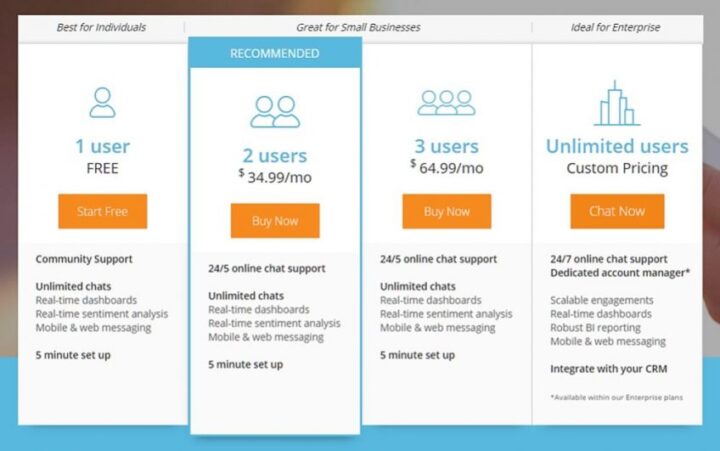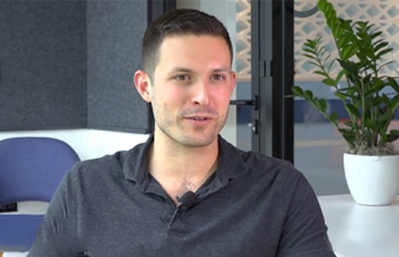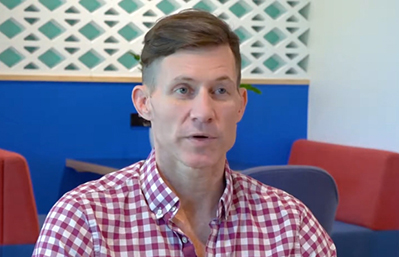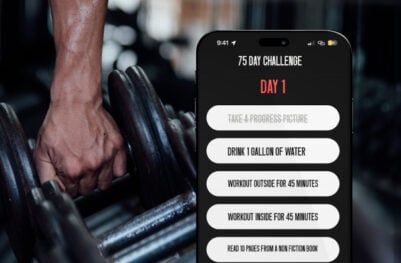- Developers
- Developer Blog
- SaaS Product Development
- How to Build Your SaaS Pricing Model

profile

By Aran Davies
Verified Expert
8 years of experience
Aran Davies is a full-stack software development engineer and tech writer with experience in Web and Mobile technologies. He is a tech nomad and has seen it all.
Wondering how to build your SaaS pricing model?
You’ve come to the right place. Let’s discuss the planning of a SaaS pricing model for your business in detail.
Questions you ask yourself first to build your SaaS price model
You should start the process by asking yourself and your team a few questions. You need to ask these questions to get a better understanding of your business model.
Consider the following questions:
- Do you prefer that your product reaches lots of customers or a few niche high-value customers? There are advantages and disadvantages to both options, these are as follows:
- More customers could mean higher revenue but also give your product a less attractive appeal (iPhone vs. Asus Zen Phone, for example).
- A small number of niche customers may mean less revenue but a higher profit margin due to the specialized nature/appeal of the product.
- Is your preference to be the low-price market leader? Are you targeting elite customers with premium products? These questions are important because the answer will tell you who your real competitors are.
Read more about these internal questions in the article “How to Develop your SaaS Pricing Model”.
Building a SaaS pricing strategy for SaaS startups requires identifying your customers
Who will buy your SaaS product?
Remember that there is already a need for your product today. Your customers are already out there.
To find them, you need to build a ’buyer persona‘ for your customers. It‘s a document that helps you visualize your customers. It involves answering several questions, and I give a few examples below:
- Where do they live?
- What do they do for a living?
- How do their demographics stack up? (Gender ratio, etc.)
- How do they find new products?
- What kinds of media are they exposed to?
If you plan to target multiple segments, you need to create several ’buyer persona‘ documents.
You can build ’buyer persona‘ using this tool by Hubspot called “Make my persona”.
Gather data about customer preference for your product

You will need to understand what your target customers will consider as valuable from your product. The model to arrive at a price for a SaaS product depends on your exact understanding of that value.
Hire expert developers for your next project
Ask questions, and use survey tools if you want accurate data about this.
However, don‘t go with a generic template-based survey, such as a cookie-cutter, as this approach won‘t work. Yes, you need demographics such as age and gender, but more importantly, you need all-important insights into their buying behavior.
Consider asking the following:
- How will customers use the product?
- Why will they buy it, i.e. to solve what problem? This question isn‘t about the features of your product. It‘s about what value customers identify as they use it. What is their desired outcome if they use your product?
- In their view, what are the most important features of a product that they would choose to solve their problem?
- What will the drivers be to use your product often?
- What additional features would they like added to your product?
You can read more about the importance of these questions in the article “The Essential Guide to Growing Your Early-stage SaaS Startup”.
IMPORTANT TIP:
You need to quantify your product’s value. You can use the ’10x rule‘ for that, i.e. set your price to 10% of the quantified value.
Determine the metrics that form the basis of your software as a service pricing model
How will you sell your product, and in which unit of a transaction? For example, are you selling your SaaS product by the number of registered users or active users? Alternatively, are you planning to sell your product or its features alone?
Take care to not set your unit to a market variable such as storage capacity. The crashing price of storage has made it unappealing, so focusing on such a unit can potentially reduce the value of your product to new customers. (i.e Avoid such claims as ‘Our SaaS word processor comes with 20 MB of free storage!’)
The next step is to further expand your market survey efforts. This step will allow you to identify your customers’ market potential, specifically how many units they are likely to buy and at what price. This data will help with setting the appropriate price.
Read more about this step in the article “How to Develop your SaaS Pricing Model”.
Customer retention and service levels are important considerations when you build SaaS pricing strategies
It is important to remember that you cannot hope to keep increasing customer acquisition to offset departing customers. The SaaS landscape is already too competitive for that. It is, for this reason, you will need to focus much of your efforts on customer retention.
To do this, your business model must factor in customer acquisition cost and the impact of customer turnover.
However, this is easier said than done. It‘s hard to get data for this. If you are just launching your SaaS product, you won‘t even have any customers yet.
If you are in the market already, but with a different product, then customer retention rates from that business won‘t fit directly in your new SaaS business either.
So you need to follow a little intuition here, and instead monitor your customer retention metrics as you are able to get more data. Thankfully, customer retention is also closely linked with service level so you can derive a good idea of retention levels from your expected service level.
You can quantify your service level commitments based on the nature of your product, for example:
- A mission-critical app requires guaranteed uptime, 24×7 support, built-in infrastructure redundancy, automated proactive monitoring, predictive automated troubleshooting, and ITIL compliant processes (you can read about ITIL in this article “What is ITIL? Your guide to the IT Infrastructure Library.”).
- A utility app at the lower end of the spectrum requires less support, e.g. email and ticketing tool-based customer support could be enough.
When determining your service level commitment, do keep in mind that certain aspects like data privacy are part of the established equation.
Customers‘ buying and procurement processes impact your SaaS pricing model
How your customers buy depends on the complexity of the product and other market dynamics. Internal procurement processes vary from one customer to another. These need to be factored into your pricing strategy.
If a product is a complex one, you should have an experienced sales team available to provide a human touch to your customers. On the other hand, a simple product can be sold solely through the eCommerce route.
A good indicator of this is the service level requirement. If you need to have extensive service support with 24×7 phone support, yours is a complex product. You will undoubtedly need to have a sales team talk to your customers.
Also, there are some markets where irrespective of product complexity, you will need to have an expert sales team. Learn more about how customers buy SaaS in this article “THE SAAS BUYING EXPERIENCE: MAPPING HOW BUSINESSES BUY SOFTWARE”.
It’s relatively easy to gather input on this. Firstly, check how your competitors sell their products. If they sell similar products with the help of expert sales teams you will easily be able to find out how by giving them a call.
Don’t forget to budget sales expenses in your pricing model.
How your customers procure software also has an impact on your revenue stream. Although a SaaS sales cycle can be shorter than traditional software, it greatly varies depending on the types of businesses to whom you sell your product.
Hire expert developers for your next project
1,200 top developers
us since 2016
The number of departments and stakeholders involved in the procurement process and the sign-offs required can impact your sales cycle. So does whether customers pay monthly or annually too.
One customer may pay up-front, and another may pay in arrears, all of this has an impact on your cash flow, and you should factor these in the pricing model.
To learn more about how businesses procure, read this article “Managing the IT Procurement Process”.
Test your initial SaaS pricing model with your users
Testing can be a real challenge when developing your SaaS pricing model for the first time since no one has bought your product yet.
This is the time for you to evaluate the pricing models of your competitors. Study them for patterns and take relevant inputs, however, don‘t imitate or simply price yours lower.
Check the competitive landscape and blend that with your customer survey data. Quantify the value your customers would get from your product against any potential cost.
A good thumb rule is that you start with a price that‘s 10% of that quantified value, using the 10x rule. Read more about the rule in the article “SaaS Pricing Strategy: The 10x Rule”.
Another good way to test your initial pricing plan is that you build your website’s landing page with an initial three to five price points and then play around with it.
Try three pricing plans, and then add several more if you feel you need to decrease/increase the price, etc. Change the price in each option and gather customer responses. Evaluate customers’ responses to see which option was well received by your potential customers.
Test the initial version of your SaaS pricing structure against customers‘ price sensitivity

Consider using a ’Price Sensitivity Meter‘ (PSM) model to gauge customers‘ price sensitivity towards your product.
You can use this model as part of a survey, and you gather the following:
- What price will make your customers rule this product out altogether? This is known as the ’too expensive‘ category.
- What price will make your customers feel that the product is too cheap and therefore the quality will likely suffer? This is the ’too cheap‘ category.
- When does the customer start to feel that the product isn‘t too expensive, but rather that the price is on the higher side and that they need to think carefully before they make a buying decision? This is your ’expensive‘ category price.
- Which price point will make customers think that this product is a good buy for its‘ price? This is the ’good value‘ category of price. Ideally, your product should be in this category.
You can gather this data from a ‘representative sample’ of your potential customers. This can then be analyzed using charts/graphs etc. This helps you to arrive at your optimal price band.
Read more about PSM in this Wikipedia article “Van Westendorp’s Price Sensitivity Meter”.
Different SaaS pricing models for you to study
The following are SaaS pricing models that are in use today:
Flat rate pricing: This is the model where you offer one product with a fixed set of features and one price. It‘s the simplest for your customers to understand.
The advantage is, of course, the ease with which you can communicate it to your customers. There are disadvantages, for example:
- A fixed pricing plan is suitable for one type of customer only, and you can‘t target different market segments with it;
- There is no flexibility built-in for you, either your customers like your plan or they don‘t.
Usage-based pricing: This is also known as the ’pay as you go‘ approach. Here you vary the price according to the usage of the product. Customers pay more if they use more, and less if they utilize it less.
Advantages of this approach are the following:
- It‘s attractive to your customers because the price is directly related to their needs. This need may have cyclical variance, so this model makes sense to them.
- The lowered entry barrier for small businesses, they pay less if they use less.
- You benefit because customers will pay for ’heavy users‘.
There are disadvantages as well, e.g.:
- SaaS companies need predictable revenue streams and this model makes their revenue unpredictable;
- Customers can‘t predict their costs either.
Tiered pricing: The most common pricing model used by SaaS companies, this approach creates bundles of different features. Companies offer bundles at different prices.
The advantages of the tiered pricing model are the following:
- Allows you to target different market segments.
- When buying, customers see other packages upfront and know that they have other packages to choose from when their usage pattern changes. This helps when it comes to upselling.
This approach has its disadvantages. It can be confusing for customers. As for your company, offering too many things to too many people can dilute the focus.
SaaS content marketing company HubSpot uses this model.
Hire expert developers for your next project
Per-user pricing: A very popular model, this involves setting a price for a user. If customers add more users, they pay more.
The advantages of this model are that it‘s very easy to communicate, and you gain more revenue if you can increase adoption. Also, the revenue stream is predictable, which is another advantage.
However, since you charge per user, adding more users can be a disincentive. Also, there are unscrupulous customers who may decide to cheat by sharing their user IDs and passwords. You are also diluting the value of your product by associating your price with the number of users only.
ProductPlan, the company behind the popular product road mapping software, uses this approach.
Per-active user pricing: A variant of per-user pricing, here you charge only based on the number of active users.
Customers see the pros of this approach since they don’t waste money on their employees who don’t actively use the product.
When they are running an enterprise-wide transformation program that includes your product, the improved economics of this model encourages them to drive organization-wide adoption.
However, this model isn’t as predictable as the per-user price model, and SaaS companies add a risk premium to cover an unpredictable revenue stream. This makes it more expensive, which acts as a dampener for small businesses.
The popular collaboration and messaging platform Slack uses this pricing model.
Per feature pricing: Instead of the number of users, the number of features is the variable here, with higher-priced plans offering more features.
Customers can clearly see the added features they can access if they upgrade, hence this model helps in upselling. Also, since you model your price by feature, you get adequately compensated for features requiring heavy-lifting.
However, this model is difficult to design well, since it‘s hard to know upfront which feature will become popular.
The popular note-taking app Evernote uses this model.
FREEMIUM model: You should already know that free trials are great for SaaS marketing. You hook customers with a free offer. Depending on how you price your product, customers pay if they decide to access more features or more capacity.
In addition to the obvious advantage of getting a foothold in your customers‘ organization, the low entry barrier can make your product viral, which is another plus.
However, remember that your free users won‘t generate any revenue for you, hence the paid users must generate enough revenue to compensate. It‘s not easy to get this balance right.
Another disadvantage stems from basic human psychology, i.e. you value more what you pay for. Customer turnover can be high for a free product.
The popular conversational marketing platform Drift uses the approach.
Final Thoughts
I will end this article by reminding you that you need to spend a lot more time than just six hours on your SaaS pricing model. By now you should see that it is a critical activity if you want to build a successful SaaS business.
If you need professionals on your project team to develop and market your SaaS product successfully in the competitive market, contact DevTeam.Space via this quick specification form to partner with a field-expert community of software developers and project managers.
Frequently Asked Questions
This is a payment model that allows users to access parts or whole of your SaaS product. The most common example is monthly or yearly subscription plans.
SaaS pricing models can be very complex, particularly as there are so many different ones available like tiered pricing model, value-based pricing model, flat rate pricing model, price-per-user pricing model, etc. The best model will always be the one that suits your target market best. Try to include several payment options, i.e monthly and yearly.
The best option is to do your homework and see what your competitors are offering. You will need to keep in mind that you need to best match the service that you offer with your client’s expectations. Remember that you should be prepared to adjust your model to keep in touch with your users.

Alexey Semeney
Founder of DevTeam.Space
Hire Alexey and His Team
To Build a Great Product
Alexey is the founder of DevTeam.Space. He is award nominee among TOP 26 mentors of FI's 'Global Startup Mentor Awards'.
Hire Expert Developers




